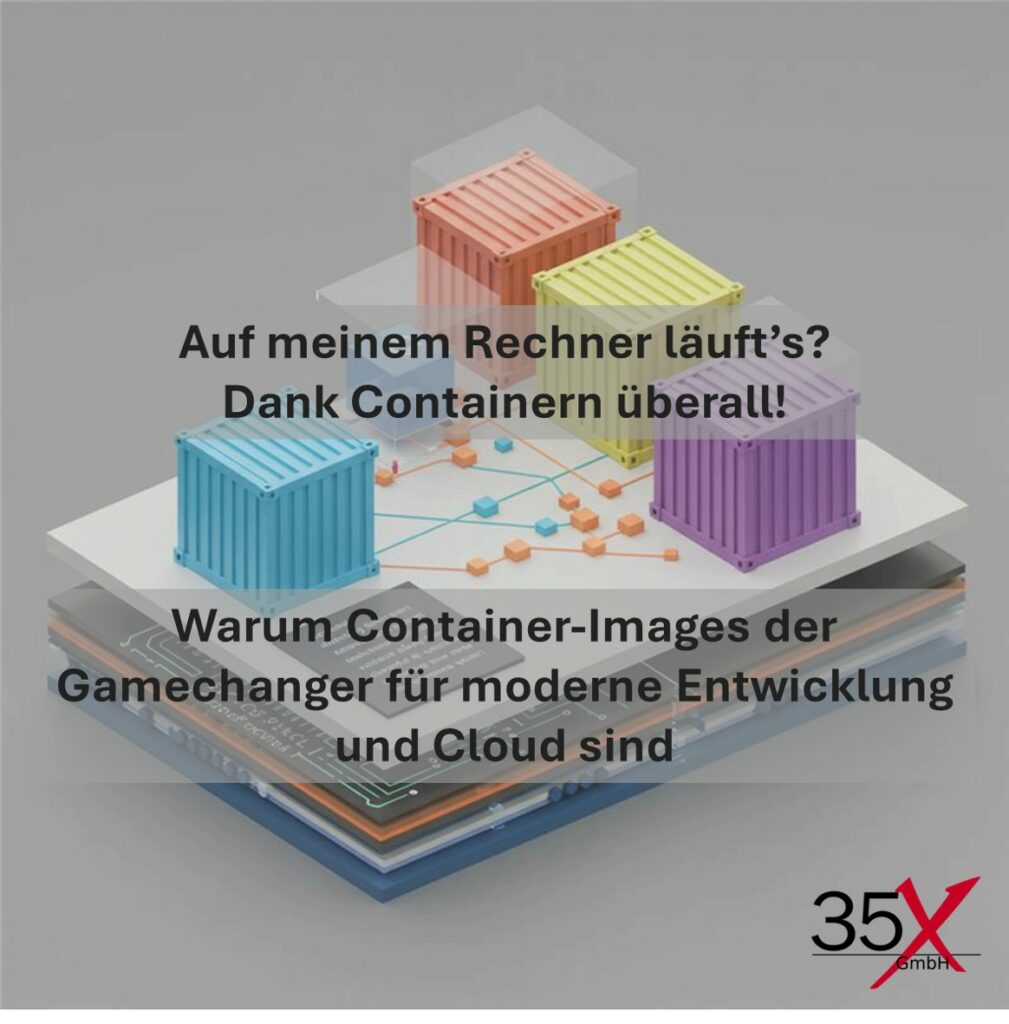We've already talked about golden images - the cake recipe for your servers. But how do the applications themselves get into the cloud? And what if we're not just talking about the cloud, but also about how developers can work more efficiently? This is where container images come into play. They are also a kind of "package", but for a different purpose and with different advantages and disadvantages than golden images - and they are revolutionizing the way we develop.

What are container images?
Imagine you are developing complex software. It consists of many components that all have to work together. But you don't want every developer to have to set up the entire environment on their computer. Container images solve this problem.
A container image is a lightweight, executable software version that contains everything the application (or part of it) needs to run:
- The code: Your application itself.
- The runtime environment: The software required to execute the code (e.g. Java, Python, Node.js).
- System tools: Libraries and other dependencies.
Why are container images different from golden images?
- Level of abstraction: Golden images are like virtual machines (VMs) - they contain an entire operating system. Container images are lighter and only contain what the application needs. really needs. You walk in an operating system, but share its kernel.
- Management: VMs are often managed individually or in groups. Containers are typically managed with orchestration tools such as Kubernetes or Docker Swarm, which automate deployment, scaling and networking.
- Development: Here comes the crucial difference. Containers make it possible for developers, very production environments on their personal laptops (e.g. with Docker Compose). This speeds up development and reduces integration problems.
- Architecture: Containers are a good fit for microservices architectures, where an application consists of many small, independent services. VMs tend to be used for monolithic applications.
The advantages of container images:
- Consistency: No matter where you run the image, the application always runs the same. No "But it works on my computer!".
- Portability: Container images run on any system that has a container runtime environment. This makes them super flexible.
- Efficiency: Containers are lightweight and start quickly. This enables high density and rapid scaling.
- Speed: Thanks to their small size, container images can be distributed and started quickly.
- Developer productivity: Containers enable developers to work independently, experiment and detect errors at an early stage.
The disadvantages of container images:
- Complexity: Microservices and container orchestration can be more complex to manage than traditional VM environments.
- Security: Container security requires special attention, as classic patch management is no longer suitable, especially due to the use of different "upstream" images and the way they are generated.
- Overhead: Even if containers are lighter than VMs, there is a certain overhead due to the container runtime environment.
Container images in the cloud workflow
Container images are an essential building block of modern cloud applications. They play a crucial role in the automation and standardization of application deployments - from the developer's laptop to production.
- Development: Developers create and test container images locally.
- CI/CD: CI/CD pipelines build, test and save the images in a registry.
- Orchestration: Tools such as Kubernetes orchestrate the provision and scaling of container images in the cloud.
An outlook:
In a later post, we'll take a closer look at how these different approaches - VMs and containers - work together with key cloud technologies such as Infrastructure as Code (IaC) and Software Configuration Management (ScM) to automate the entire application lifecycle. We will also look at how developers can use container images to make their workloads more efficient.
Conclusion: container images as enablers of the cloud and development
Container images are an essential building block of modern cloud applications, especially for microservices and cloud-native architectures. They offer advantages in terms of consistency, portability, efficiency and developer productivity, but also require new approaches to management and security.


